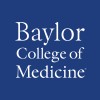
Tacrolimus Combined With Prednisone Treatment of Idiopathic Membranous Nephropathy and Nephrotic...
Idiopathic Membranous NephropathyNephrotic SyndromeIdiopathic membranous nephropathy (IMN) is one of the most common forms of nephrotic syndrome (NS) in adults and is usually treated by corticosteroids in combination with cytotoxic drugs especially cyclophosphamide or cyclosporine. Tacrolimus, a new immunosuppressive agent, was proved to be effective in treating refractory NS. Whether it is effective in IMN has not been reported. We therefore undertook a multi-center, controlled study to investigate the efficacy and safety profile of tacrolimus compared with cyclophosphamide in the treatment of patients with idiopathic membranous nephropathy and nephrotic syndrome.

A Pilot Study of Norfloxacin for Hepatopulmonary Syndrome
Hepatopulmonary SyndromeThe hepatopulmonary syndrome (HPS)and pre-HPS is a disease seen in patients with chronic liver disease, whereby patients develop dilations in the blood vessels of the lungs, resulting in low oxygen levels and shortness of breath. In this study, each HPS and pre-HPS subject will be treated with a commonly used antibiotic called "norfloxacin" (approved for use in the treatment of gonorrhea, prostatitis and urinary tract infections) for a 4-week period. In order to ensure that any observed improvement was indeed due to norfloxacin, each subject will also be treated with a separate 4-week course of an identical placebo. There will also be a 4 week wash-out period (no study medication/placebo) between the 2 courses of treatment. The primary aim of the study will be to measure improvements in oxygen levels while on norfloxacin, although a number of secondary parameters will also be followed.

Chemotherapy and Total-Body Irradiation Followed by Donor Umbilical Cord Blood Transplant, Cyclosporine,...
Chronic Myeloproliferative DisordersLeukemia2 moreRATIONALE: Giving low doses of chemotherapy, such as cyclophosphamide and fludarabine, and radiation therapy before a donor umbilical cord blood stem cell transplant helps stop the growth of cancer cells. It also stops the patient's immune system from rejecting the donor's stem cells. The donated stem cells may replace the patient's immune system and help destroy any remaining cancer cells (graft-versus-tumor effect). Sometimes the transplanted cells from a donor can also make an immune response against the body's normal cells. Giving cyclosporine and mycophenolate mofetil after the transplant may stop this from happening. PURPOSE: This clinical trial is studying how well giving chemotherapy together with total-body irradiation followed by donor umbilical cord blood transplant, cyclosporine, and mycophenolate mofetil works in treating patients with hematologic cancer.

Safety and Efficacy Trial of Serostim® in the Treatment of Subjects With Human Immunodeficiency...
Human Immunodeficiency Virus-associated Adipose Redistribution Syndrome (HARS)Human Immunodeficiency Virus InfectionsThis study is a Phase 2/3, multicenter, double-blind, randomized, parallel-group, placebo-controlled, dose-finding trial of Serostim® (mammalian cell-derived recombinant human growth hormone, r-hGH) versus placebo in subjects with human immunodeficiency virus-associated adipose tissue redistribution syndrome (HARS). The primary study objective is to determine whether Serostim® treatment reduces adipose tissue maldistribution more effectively than placebo. The primary co-endpoints are derived from measures of visceral adipose tissue assessed by computerized tomography (CT) and the ratio of trunk; and limb fat assessed by dual-energy X-Ray absorptiometry (DXA) scans. Anthropometric measures, physical exams, quality of life assessments, serial photographs, and various laboratory measures will be used to address secondary objectives. These secondary objectives relate to the impact of Serostim® on Physician and subject assessments of change in body shape, health-related quality of life, attitude towards medication compliance, metabolic markers, fat redistribution, and safety. On Day 1, eligible subjects will be randomized in a 1:1:1 ratio to receive daily Serostim®, Serostim® and placebo given on alternate days, or daily placebo. Serostim® doses will be based on body weight, with a maximum dose of 4 milligram (mg). Therapy will continue for 12 weeks. Treatment will then be altered and the new treatment will be continued through Week 24. Interim Study Visits will be required at Weeks 2 and 4 (Treatment Period 1) and at Weeks 14 and 16 (Treatment Period 2). Subjects will be offered to be enrolled into a maintenance Protocol (Study 23056) at Week 24.

Transdermal Lisuride: a Trial for the Treatment of Patients With Restless Legs Syndrome (RLS)
Restless Legs SyndromeThe objective of this trial is to compare an individually optimized dose of the lisuride TTS patch against placebo and against an individually optimized dose of oral ropinirole (active- and placebo-controlled design) in idiopathic and uremic RLS patients with regard to efficacy, safety, and quality of life.

IGF-I/IGFBP-3 Therapy in Children and Adolescents With Growth Hormone Insenitivity Syndrome (GHIS)...
Growth Hormone Insensitivity Syndrome (GHIS)Laron SyndromeSTUDY OBJECTIVE To evaluate the safety, tolerability, and efficacy, as growth velocity (statural growth), of rhIGF-I/rhIGFBP-3 administered for 12 months in pre-pubertal children and adolescents with GHIS. STUDY DESIGN This study is an open-label, multi-center clinical trial to evaluate the safety and effectiveness of rhIGF-I/rhIGFBP-3 to increase rate of growth when administered once daily for 12 months in children and adolescents with growth hormone insensitivity syndrome (GHIS) such as Laron Syndrome. At the end of the initial twelve-month treatment period, additional safety and long-term efficacy data will be assessed in a second 12 month treatment period.

T Cell Depletion for Recipients of HLA Haploidentical Related Donor Stem Cell Grafts
Acute Lymphoblastic LeukemiaNon Hodgkins Lymphoma7 moreSubjects are being asked to participate in this study because treatment of their disease requires them to receive a stem cell transplant. Stem cells or "mother" cells are the source of normal blood cells and lead to recovery of blood counts after bone marrow transplantation (BMT). Unfortunately, there is not a perfectly matched stem cell donor (like a sister or brother) and the subject's disease is considered rapidly progressive and does not permit enough time to identify another donor (like someone from a registry list that is not their relative). We have, however, identified a close relative of the subject's whose stem cells are not a perfect match, but can be used. However, with this type of donor, there is typically an increased risk of developing graft-versus-host disease (GVHD), a high rate of transplant failure, and a longer delay in the recovery of the immune system. GVHD is a serious and sometimes fatal side effect of stem cell transplant. GVHD occurs when the new donor cells (graft) recognizes that the body tissues of the patient (host) are different from those of the donor. When this happens, cells in the graft may attack the host organs, primarily the skin, liver, and intestines. The number of occurrences and harshness of severe GVHD depends on several factors, including the degree of genetic differences between the donor and recipient, the intensity of the pre-treatment conditioning regimen, the quantity of transplanted cells, and the recipient's age. In recipients of mismatched family member or matched unrelated donor stem cell transplants, there is a greater risk of GVHD so that 70-90% of recipients of unchanged marrow will develop severe GVHD which could include symptoms such as marked diarrhea, liver failure, or even death. In an effort to lower the occurrences and severity of graft-versus-host disease in patients and to lower the rate of transplant failure, we would like to specially treat the donor's blood cells to remove cells that are most likely to attack the patient's tissues. This will occur in combination with intense conditioning treatment that the patient will receive before the transplant.

Comparison of Keppra and Clonidine in the Treatment of Tics
Tic DisordersTourette SyndromeThe goal of this study is to confirm that levetiracetam has a better tic-suppressing profile than that of the widely used tic-suppressing medication, clonidine. More specifically, the investigators hypothesize that in a 15 week placebo run-in, double-blind, medication cross-over trial; levetiracetam will be more effective and have fewer side-effects than clonidine.

A Six-month Study to Compare Outcome Differences and Visceral Response ... Irritable Bowel Syndrome...
Irritable Bowel SyndromeThe purpose of this study is to assess the effect of participation in one of the following interventions: (1) IBS Stress Management; (2) IBS Symptom Management; or (3) IBS Educational Training on improving IBS associated symptoms. It is anticipated that this research will provide information on the usefulness of psychological approaches in treating IBS and will help scientists better understand the disorder.

Laboratory-Treated Lymphocyte Infusion After Haploidentical Donor Stem Cell Transplant
LeukemiaMyelodysplastic SyndromesRATIONALE: Giving total-body irradiation and chemotherapy, such as thiotepa and fludarabine, before a donor stem cell transplant helps stop the growth of cancer or abnormal cells. It also helps stop the patient's immune system from rejecting the donor's stem cells. When the healthy stem cells from a donor are infused into the patient they may help the patient's bone marrow make stem cells, red blood cells, white blood cells, and platelets. Sometimes the transplanted cells from a donor can make an immune response against the body's normal cells. Giving methylprednisolone and antithymocyte globulin before transplant and peripheral blood cells that have been treated in the laboratory after transplant may stop this from happening. PURPOSE: This phase I trial is studying the side effects and best dose of laboratory-treated peripheral blood cell infusion after donor stem cell transplant in treating patients with hematologic cancers or other diseases.
